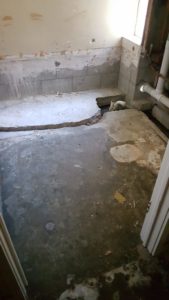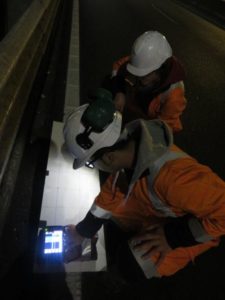We read with great interest an article recently published in LinkedIn by Andy Kitson about the importance of using experts […]
We read with great interest an article recently published in LinkedIn by Andy Kitson about the importance of using experts to collect and interpret Ground Penetration Radar (GPR) results.
It is great to see this kind of discussion about non-destructive testing (NDT) technologies coming from an independent source. Evidence that the professionals who have made NDT their specialty are raising the same concerns that we have raised here at Concrete Structure Investigations (CSI).
CSI has had these concerns as a ‘pet project’ since our inception nearly 6 years ago, including the need for training in NDT (GPR included), qualifications and regulation in NZ.
For some further reading on this here are some links to our previous blogs commenting on these issues here
Unfortunately, the training from sellers of the equipment that we have encountered is woefully inadequate. CSI have talked with manufacturers about the need for “Professional Responsibility” as sellers of the equipment. Non-destructive technologies are often a ‘dark art’ and the real danger lies in the operators of such technology ‘not knowing what they don’t know’! You can look at data and believe you are ‘seeing the results’ however without expertise you can be totally misinterpreting them.

Cracked concrete slab from Christchurch Earthquake
This can have dire consequences, particularly when Consulting Engineers rely on the ‘incorrect data’ for further design, building additions, retrofit (seismic or otherwise) and renovation.
Over the past 5+ years, CSI has invested a formidable percentage of our yearly budget towards Research and Development and Continuous Professional Development (CPD), particularly around GPR. This ongoing R & D and CPD commitment has been multi-pronged:
Due to the lack of NZ regulation around NDT, CSI uses global standards, where one exists, that most closely aligns with NZ conditions. These can be found on our website under the Services section.
The only point from the article that differs from our own experience is that we do not find most situations on site are straightforward. Quite the opposite actually. There are just about always anomalies and challenges that require interpretation and analysis from a knowledgeable operator.

Nighttime analysis on a busy Auckland motorway
Without regulation (which we believe does not need to be too hard to develop given it exists overseas) the NDT industry could head the same way as Construction in New Zealand – where nobody is dealing with the ‘elephant in the room’! Most alarmingly; lack of expertise in NDT can result in catastrophic building disasters, jeopardising human life.
Put out just the other day by MBIE, EQC, NZSEE, The Structural Engineering Society and NZ Geotechnical Society is the document ‘The Seismic Assessment of Existing Buildings’. In Part C they address guidelines for assessment of concrete buildings
In this, they cite that the document “… draws on international standards and guidelines on seismic assessment and strengthening/retrofitting, with the aim of adapting and integrating best practice to best suit New Zealand conditions”. They have listed both Ultrasonic Testing and Ground Penetrating Radar under Appendix C5-25 and C5-26.
At the very least, we believe existing NDT operators should be operating to Global Testing Standards and seek out professional training if they cannot meet the Standard’s Requirements.
We would welcome your thoughts and comments on this topic that we are very passionate about. Contact the expert NDT team at CSI – phone: 0800 33 77 67 or email: info@csiscan.nz
You must be logged in to post a comment.
I have a question , Can a company manufacture and test there work like MPI & penetrate test if they have the qualified international qualifications and procedures in place.
It is not really CSI’s role to advise whether a company ‘can’ test their own but our own business model is that we offer a service that is independent; i.e we have nothing to lose or gain from the results we get for clients